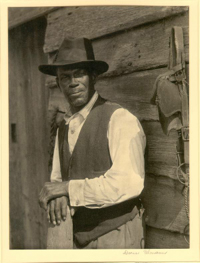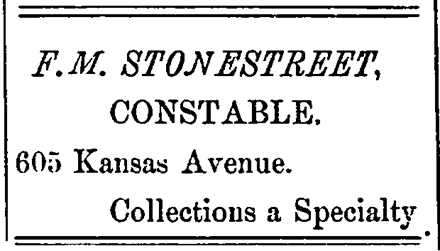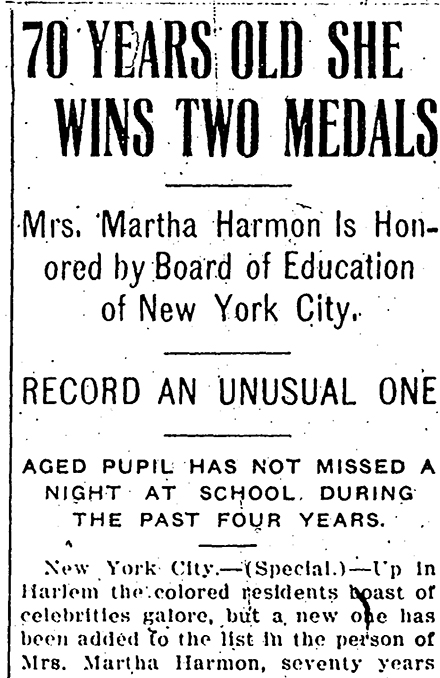A Patron-Grown Reference Tool: The Notable Kentucky African Americans Database

The Notable Kentucky African Americans Database (NKAA) is a continuously updated reference tool for studying African Americans in and from Kentucky from the 1700s to the present day. The database is freely available online, and receives well over 100,000 hits each year. It was created by librarians Rob Aken and Reinette Jones, both at the University of Kentucky Libraries. Entries focus on relevant people, places, events, or activities. The database research is completed by Rob and Reinette as well as volunteers in Kentucky and other locations across the United States. In addition to the entries, the database provides the titles of sources where additional information may be found, and the homepage offers other links of interest.
NKAA started as a simple web page in 2003 and became a robust database in 2007. It took nearly a decade of discussion about creating an in-house African American database before it actually happened. Reference statistics, regarded as an indication of insufficient demand and support; were the main hurdle. While the number of reference questions received had remained consistent over several decades, they were consistently unfulfilled. There was also the assumption that not enough published literature existed to support such a project. (For greater detail about the development of the NKAA Database, please see the article “Creating a Web Resource: African American Kentuckian Profiles” in the Journal of Library Administration, 2005.)
From the day in September 2003 when the NKAA Database went live as a web page with a few hundred entries, it was patron response that gave the project its critical thrust forward. By the end of the first year, there were more than 500 submitted entries, and nearly as many were received the second year. That level of patron response has fueled the growth to the point today in which the database features a few thousand entries, titles, and updates. The content has grown beyond individual biographies to include all aspects of the African American experience in relation to Kentucky, covering everything from accounting to zoology. And in 2009, the Notable Kentucky African Americans Database won the RUSA/Gale Cengage Learning Award for Excellence in Reference and Adult Library Services, which is administered by the Reference and User Services Association of the American Library Association.
Although it can still take three to six months of research to complete an entry, online access to historical African American newspapers has been one of the major factors behind the rapid growth of new entries, sources and updates. Such access ranges from a few titles within a few small databases to the 270 titles available within African American Newspapers, 1827-1998.
Newspapers contain a lot more information about lesser-known African Americans in and from Kentucky than do published monographs and periodicals. As early as 1842 when The Colored Kentuckian was established by Philip H. Murry and J. P. Sampson, newspapers were a major source of information for African Americans in Kentucky. Also, newspaper editors from Kentucky were leaders within national organizations such as the National Colored Press Association, which was formed in 1881.
An example of the wealth of information not found in other sources is the entry for Frederick M. Stonestreet, Sr. He is mentioned in a sentence on p. 124 in Thomas C. Cox’s 1982 book, Blacks in Topeka, Kansas, 1865-1915: A Social History. Significant additional information about Stonestreet’s life and accomplishments was found by searching African American newspapers published in Kansas and Nebraska. The research for his entry in the NKAA Database was completed in a few weeks, compared to what would have been months or years of searching and a flood of interlibrary loan requests.

Frederick M. Stonestreet (1858-1931), a Kentucky native, was an employee in the Kansas state house in 1880 and the house messenger in 1883. He was the first African American fireman and constable in Topeka, and the first marshal of the city courts of Topeka from the 1890s to the early 1900s. He was a successful funeral home director, and two of his sons were partners in the business. Stonestreet came to Kansas with his mother and grandmother in 1862, about a year after Kansas was admitted to the Union as the 34th state and fifteen years before African American communities such as Nicodemus were established in Kansas by African Americans from Kentucky during the Reconstruction Era.
Prior to the Civil War, few free African Americans migrated from the slave holding state of Kentucky to the Kansas Territory where bloody confrontations were taking place over the question of Kansas becoming an abolitionist or pro-slavery state. The majority of African Americans leaving Kentucky during this period, both free and escaped slaves, were heading north.

Within the NKAA Database are many stories of individuals who were part of migrations and movements throughout U.S. history. A 20th-century example was John S. Sloan (1918-2001) from Louisville. He was a Tuskegee Airman with the 99th Fighter Squadron, the first African American fighter squadron. Sloan earned a Purple Heart, and after his World War II military service, he and his wife left Kentucky for Chicago where Sloan was employed at Inland Steel. He was the first African American personnel counselor at the company and prior to his retirement, Sloan had advanced to the position of corporate finance manager.

While not every entry in the NKAA Database will include an African American newspaper source, online newspaper collections will continue to be a primary go-to resource because the odds are good for locating needed information. Relevant news and advertisements from various geographic locations were printed in African American newspapers published in other states. It was not uncommon to see advertisements such as this one in the 1895 Cleveland Gazette for subscriptions to The Standard newspaper in Lexington and The Inter Ocean newspaper in Chicago.

In 1911, the story of Mrs. Martha Harmon winning two medals was published in at least four newspapers: The Washington Bee (D.C), Freeman (Indianapolis, Indiana), The Savannah Tribune (Georgia), and Cleveland Gazette (Ohio). Mrs. Harmon, a widow and a former slave, was a Kentucky native born in 1841. In 1911, she was the oldest student attending night school at Public School No.157 located at 125th Street and Manhattan Avenue in New York City. For four years, Mrs. Harmon had walked to school each day, never missed a class, and was late only once. The New York City Board of Education awarded Harmon two medals, one for her accomplishments in her studies and one for her attendance. Harmon lived with her daughter and grandson, and two boarders, one of whom was Richard McPherson (aka Cecil Mack), a lyricist and music publisher who co-wrote with Tim Brymn the 1901 hit song Josephine, My Jo.
There is much, much more to be discovered about African American in and from Kentucky in African American Newspapers, 1827-1998. The ability to do a single search of the full-text of hundreds of digitized issues of African American newspapers, ranging from Freedom’s Journal—the first African-American owned and operated newspaper published in the United States—to contemporary titles from the late 20th century, is equivalent to warp speed when compared to searching through paper and microfilm. Locating a paragraph or two about any given entry in the NKAA Database is a good find. Finding an entire column is great. Anything more than a single column is an absolutely golden moment! Our gratitude is extended to the newspaper owners who thought it worth their while to record the biographies of such Kentuckians as Emma Gaines, J. Q. [John Quincy] Adams, Charles H. Brooks, John S. Bailey, and Stanley P. Mitchell.
Reference Notes:
- Arnold, Anna E. A History of Kansas. Topeka, KS: The State of Kansas, 1914. Available online at Google Books. http://bit.ly/wb8NLU Accessed January 10, 2012.
- Cox, Thomas C. Blacks in Topeka, Kansas, 1865-1915: A Social History. Baton Rouge, LA: Louisiana State University Press, 1982.
- Ethnic and Alternative Newspaper Collections – Online. Libguide. University of Kentucky Libraries, 2012. http://libguides.uky.edu/ethaltnews Accessed January 26, 2012.
- Jones, Reinette F. Library Service to African Americans in Kentucky: from the Reconstruction Era to the 1960s. Jefferson, NC: McFarland & Co., 2001.
- Nicodemus: National Historical Site, Kansas. Washington, D.C.: National Park Service, U.S. Department of the Interior. http://www.nps.gov/nico/index.htm Accessed January 26, 2012.
- Notable Kentucky African Americans Database. Lexington, KY: University of Kentucky Libraries, 2003-. http://www.uky.edu/Libraries/NKAA/index.php Accessed January 26, 2012.
Frederick M. Stonestreet
Nicodemus [several related entries]
Murry, Philip H. [The Colored Kentuckian]
National Colored Press Association
John S. Sloan
Martha Harmon
Emma Gaines
John Quincy Adams (J.Q.)
Charles H. Brooks
John S. Bailey
Stanley P. Mitchell [National Civil Liberty Party] - Reinette F. Jones, Linda Kompanik, and Wayne Onkst (2009): Spotlight: Eliza Atkins Gleason, Ruth Hill Jones, and Della Jones, Kentucky Libraries, vol.73, issue 4, pp.20-21.
- Reinette F. Jones (2005): Creating a Web Resource, Journal of Library Administration, vol.43, issue 3-4, pp.149-159.
- Reinette F. Jones (2001): 1946 Alcatraz Escape Attempt Led by Library Orderly from Kentucky, Kentucky Libraries, vol.65, issue 3, pp.8-10.
- Table 32. Kentucky – Race and Hispanic Origin: 1790-1990. Historical Census Statistics on Population Totals By Race, 1790 to 1990, and By Hispanic Origin, 1970 to 1990, For The United States, Regions, Divisions, and States by Campbell Gibson and Kay Jung. Working paper series no.56. Washington, D. C.: Population Division of the U.S. Census Bureau, September 2002. Accessed January 10, 2012.
- “Tim Brymn” in Harlem Renaissance Lives: from the African American National Biography, edited by Henry Louis Gates and Evelyn Brooks Higginbotham. New York: Oxford University Press, 2009.
- “University of Kentucky Libraries’ online African American history tool wins RUSA award.” Chicago, IL: American Library Association, 2009. Accessed January 26, 2012.




